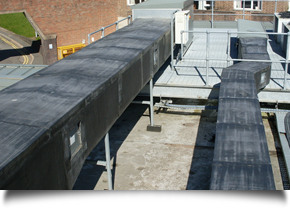
- October 3, 2022
What types of asbestos can cause asbestos diseases?
If workers tend to be exposed to fiber, health supervision can also be needed through consultation with work doctors. Asbestos management together with health supervision will help the possibility of risk based on employee medical assessment. This high-risk job tends to be like the work of the removal of ACM. AMP will include how often people may need to be referred to asbestos that can cause asbestos- website .

There are six types of asbestos identified by the Mineral and Serpentine Mineral Family.
Amphibious Mineral Family
Five types of asbestos belong to the AMFIBOL family. This variety has a sharp structure and is like a straight chain that is easily inhaled.
- Asbestos amphibole includes:
- Actinolite asbestos
- Amosite Asbestos
- Asbestos Anthophyllite
- Crocidolite
- Asbestos tremolite
- Actinolite asbestos
Actinolite asbestos is generally dark and has fiber-like a needle-like needle that when air, can be easily inhaled. Actinolite consists of other minerals including calcium, magnesium, iron, and silicone. Actinolite was previously used in products such as cement, insulation material, paint, sealant, and drywall.
Amosite Asbestos
Amosite asbestos, also known as chocolate asbestos, is considered one of the most dangerous types of asbestos. Especially mined in South Africa, amosite is characterized by sharp fibers, fragile, such as needles that can be easily inhaled. Amosite forms about five percent of asbestos material used in buildings in the United States making it the second type of asbestos that is most commonly used next to Chrysotile.
- Cement
- Chemical insulation
- Electric insulation
- Fire protection
- Gasket
- Insulation board
- Plumbing insulation
- Roof
- Thermal isolation
- Tile
Asbestos Anthophyllite
Like other types of asbestos in the amphibole family, Anthophyllite consists of long fibers such as needles that can be easily inhaled into the lungs. Anthophyllite can range from brown to yellowish and mostly consist of magnesium and iron. One form of asbestos is rare, Anthophyllite is not often used in consumer products, but can be found in cement and isolation.
Asbestos crocidolite
Asbestos Crocidolite, also known as blue asbestos, is considered the most dangerous type of asbestos in the Amphibious family. Crocidolite consists of a very fine sharp fiber that is very easy to inhale. Studies show that crocidolite is very dangerous, and may be responsible for more diseases and deaths than other types of asbestos.
Crocidolite is rarely used in commercial products because it is found far more unable to stand heat than other types of asbestos. Crocidolite is used in products such as cement, tiles, and insulation materials.
Asbestos tremolite
Asbestos Tremolite is known for its heat-resistant nature and can also be woven into cloth. Like other asbestos in the amphibole family, tremolites have sharp fibers that can be easily inhaled or digested. Tremolites are no longer mined and are responsible for many cases of cancer-related to asbestos and asbestos. The range of colored tremolite from milk white to dark green is found in other minerals such as powder and vermiculite. Tremolites were previously used in various products such as paint, sealant, insulation, roof, and pipe material.
Serpentine Mineral Family
Asbestos Chrysotile is one type of asbestos known to belong to Serpentine’s family. Also known as white asbestos, this variety consists of curly fiber and has a layered structure.
Asbestos Chrysotile
Asbestos Chrysotile is the most commonly used asbestos variation, consisting of 90 to 95 percent of asbestos used in buildings in the United States. Praised for its heat-resistant nature and flexible fiber that can be weeded into cloth, medical practitioners AA Chrysotile.
